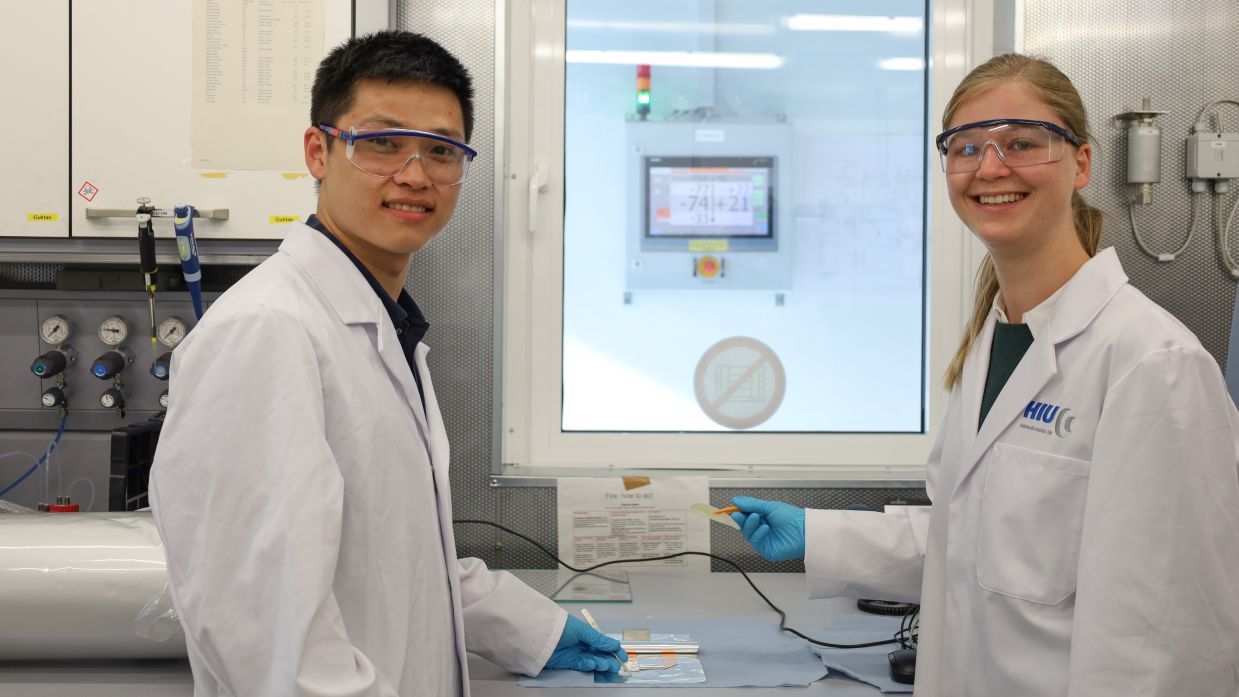Solid-state batteries may push electric mobility. Within the new application-oriented ALANO project coordinated by BMW AG, partners from industry and science study lithium batteries of the next generation: A lithium metal anode and a solid electrolyte ensure high safety and enhance energy density on cell level, thus increasing the range of electric cars. The Helmholtz Institute Ulm (HIU) founded by Karlsruhe Institute of Technology (KIT) and Ulm University is involved in the project funded by the Federal Research Ministry.
Light and powerful, inexpensive and safe – accumulators for electric cars have to meet several criteria. For some time now, battery researchers and automotive manufacturers have therefore focused on solid-state batteries. In such batteries, both electrodes and the electrolyte are made of solid materials. The solid electrolyte in particular promises to enhance safety: It is hardly inflammable and cannot leak. The new collaboration project ALANO (stands for: Alternative Anode Concepts for Safe Solid-state Batteries) deals with lithium batteries of the next generation and focuses on the lithium metal anode as the central component. ALANO is aimed at enhancing energy density of a solid-state battery at high safety.
Higher Energy Density – Longer Range
“Use of lithium metal as anode material may considerably enhance energy density on cell level and, thus, increase the range of electric cars,” says Professor Stefano Passerini, Director of the Helmholtz Institute Ulm (HIU), one of the partners of ALANO, and Head of the Electrochemistry for Batteries Group. Within the ALANO project, partners from research and industry evaluate various innovative lithium metal-based anode concepts for solid-state batteries in order to optimize reactivity, safety, and performance of the anode and to integrate the latter in a robust cell unit of high energy density. Combination with a solid electrolyte is of decisive importance. Contrary to conventional liquid electrolytes that strongly react with lithium metal, solid electrolytes are less reactive and, hence, enable formation of kinetically stable interfaces. This promises to result in several advantages: “First, safety will be improved considerably, as the cells will not contain any liquid and easily inflammable substances,” says Dr. Dominic Bresser, Head of the Electrochemical Energy Storage Materials Group of HIU. “Second, robustness of the cells is increased, which facilitates handling, cooling, and system integration.” In this way, costs on the cell, module, and system levels will be reduced. At the same time, durability of the cells is increased, thus improving its sustainability.
Research and Development along the Chain of Values Added
The ALANO project covers the entire chain of values added of solid-state batteries with a lithium metal anode: From the selection of materials to the manufacture of components, to producing cells, to battery scaling for use in vehicles and other applications, to recycling. Hence, circular economy aspects will also be taken into account. Partners from industry and research collaborate across branches and disciplines in the ALANO project.
The consortium is coordinated by BMW AG. Among the other industry partners are Applied Materials GmbH, ARLANXEO GmbH, DAIKIN Chemical Europe GmbH, RENA Technologies GmbH, and VARTA Microbattery GmbH. Research partners include HIU, Fraunhofer Institute for Manufacturing Technology and Advanced Materials IFAM, Fraunhofer Institute for Surface Engineering and Thin Films IST, Forschungszentrum Jülich (FZJ), Electrochemical Energy Technology Battery Research Center (MEET) at the University of Münster, Center for Solar Energy and Hydrogen Research Baden-Württemberg (ZSW), and Gießen University. BASF SE is an associated project partner. ALANO will start in September 2021 and is scheduled for a duration of three years. The Federal Ministry of Education and Research (BMBF) will fund ALANO under the “Battery 2020 Transfer” program (battery materials for future electromobile, stationary, and other industrially relevant uses).
More about the KIT Energy Center: https://www.energy.kit.edu/
Find more about HIU: https://hiu-batteries.de/en/
About the Helmholtz Institute Ulm
The Helmholtz Institute Ulm (HIU) was established in January 2011 by Karlsruhe Institute of Technology (KIT), member of the Helmholtz Association, in cooperation with Ulm University. With the German Aerospace Center (DLR) and the Center for Solar Energy and Hydrogen Research Baden-Württemberg (ZSW), two other renowned institutions are involved in the HIU as associated partners. The international team of about 130 scientists at HIU works on the development of future energy storage systems for stationary and mobile use.
Being “The Research University in the Helmholtz Association”, KIT creates and imparts knowledge for the society and the environment. It is the objective to make significant contributions to the global challenges in the fields of energy, mobility, and information. For this, about 10,000 employees cooperate in a broad range of disciplines in natural sciences, engineering sciences, economics, and the humanities and social sciences. KIT prepares its 22,800 students for responsible tasks in society, industry, and science by offering research-based study programs. Innovation efforts at KIT build a bridge between important scientific findings and their application for the benefit of society, economic prosperity, and the preservation of our natural basis of life. KIT is one of the German universities of excellence.

